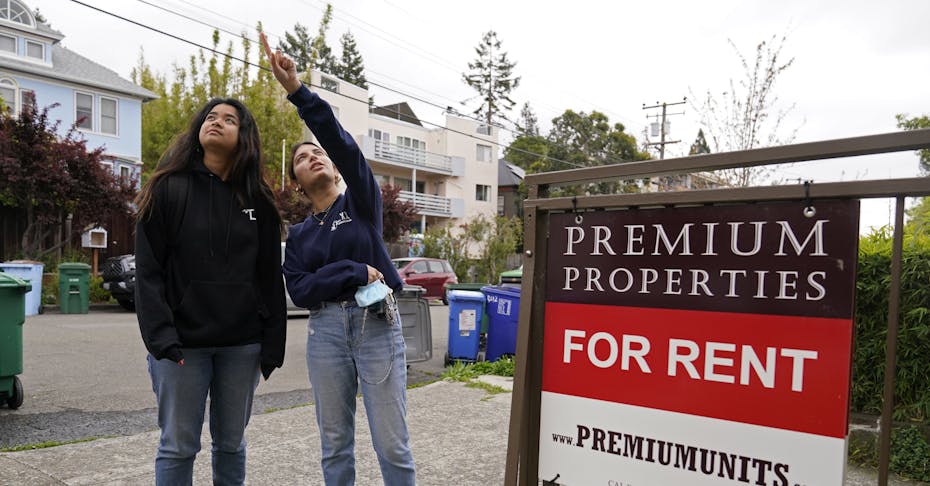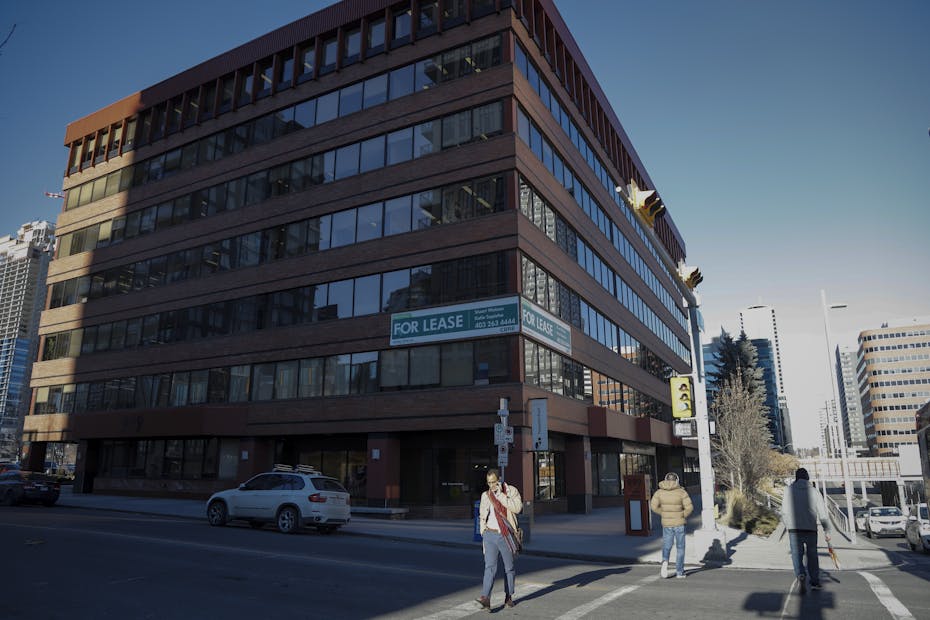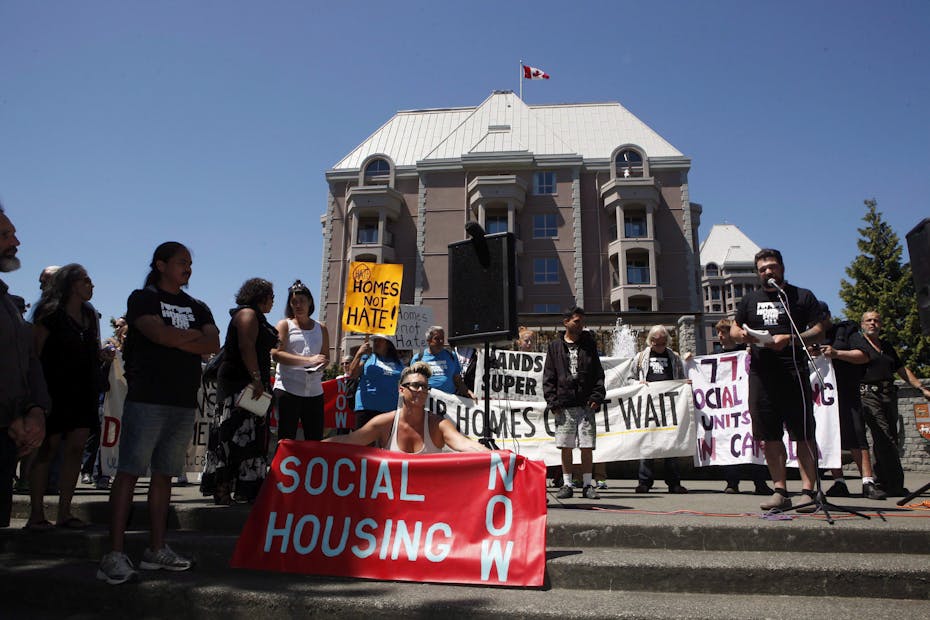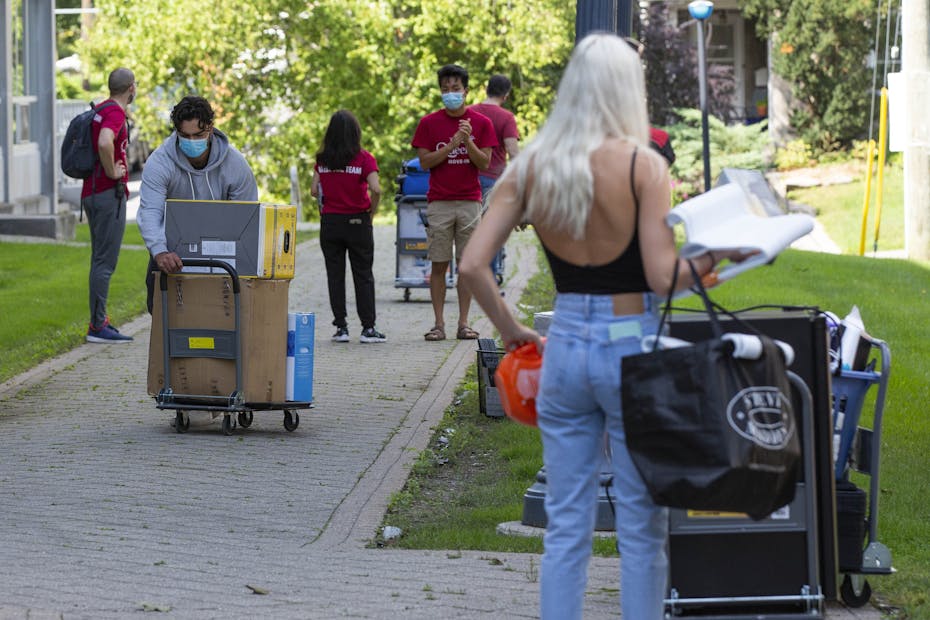
(AP Photo/Eric Risberg)
The Toronto Star reported recently that American real estate giant Blackstone Inc., with a global real estate portfolio worth about US$514 billion, plans to expand its Canadian operations, including via student housing.
The shift from “houses as dwellings” to pure market investment is a challenge for university and college students and for cities around the world. It’s part of a larger challenge revealed in the documentary Push where Leilani Farha, the UN Special Rapporteur on the Right to Adequate Housing, travels the globe, trying to understand who’s being pushed out of the city and why.
Awareness, policy and regulatory solutions are urgently needed to improve student housing.
Student solutions
I teach communication courses. One is a business communication for a master of applied economics and policy program and another is a general elective course for undergraduate students about well-being. In both courses, students examine a current societal challenge and pitch solutions.
In this endeavour, students use what’s known as the Human Development and Capability approach — the underpinning framework for the United Nations Human Development Report and Human Development Index.
The approach puts people at the centre of policy decisions and provides a multidimensional framework for what people are able to do and be.
Students rely on this framework to think about social challenges like housing as a human right and to develop solutions.
Complex challenges for higher education
The Canadian government, the Ontario government, the United Nations, the United Nations Declaration on the Rights of Indigenous Peoples and the World Bank all say housing is a human right. Yet many people lack decent housing.
Institutional investors, not only governments — including post-secondary institutions — have a role to play to address the housing crisis.
Student housing intersects with many complex challenges for higher education like the increasingly complex accountability frameworks that universities must navigate.

THE CANADIAN PRESS/Jeff McIntosh
‘Economic citizens’
The Ontario government’s performance-based funding requires universities and colleges to set and report on goals. Some provincial funding is affected by their performance.
Agreements between the province and higher education institutions focus on students as economic citizens, which means institutions identify narrow goals like feeding the labour market and increasing enrolments.
But the goal of growing student enrolment creates an additional challenge to the housing market.
Canada tripled the population of international students between 2009 and 2021. According to UNESCO, the rate of internationally mobile students tripled globally between 2000 to 2019. It’s now just above six million students.
All these factors point to the reality that student housing is a complex problem that requires dynamic solutions.
Students pitch their solutions
In my classes, students participate in active debates about housing and the global multidimensional poverty index. They propose how our society could regulate accumulating wealth and establish a “riches line” that determines how much money is too much and if the government should intervene in markets and democratic processes.
Students pitch solutions to the housing crisis. One group might suggest “Instaglam” solutions (like van living), or creating innovative “micro-apartments.”
Typically, students review philosopher Martha Nussbaum’s persuasive list of human rights (known as central capabilities) to frame housing as a human right.
Economics students have suggested an investment scheme: Part of the cost of student housing becomes a tax-free savings plan for their future housing investments in the local community. Nussbaum’s central capabilities lists suggests that people should have opportunities to “hold property.”
Currently, universities may not track international students who graduated to know where they settled and whether they contribute to the local Canadian economy.
The investment idea came to students after exploring the Canada Mortgage and Housing Corporation (CMHC) website. No international students knew about CMHC until they took my course.

THE CANADIAN PRESS/Chad Hipolito
Students also learned from guest speakers about specific issues: Community Land Trusts, where non-profit corporations take a human rights-based approach to housing by purchasing land or facilitating donations to create housing that serves the community; “housing first” approaches for people experiencing homelessness who also need support with addictions; and the complexity of developing interconnected international, national, provincial and municipal government policy.
Precarious work, gig economy
Alex Usher at Higher Education Strategy Associates estimates that by 2025, universities and colleges will take in more than 50 per cent of tuition fees from international student enrolments. The Canadian and Ontario governments hope to generate new revenue while bringing in highly qualified students to prepare for a modern labour market.
The housing crisis demonstrates that focusing higher education planning on unpredictable labour markets and precarious work in a gig economy is narrow and misconceived.
Statistics Canada reported that in the 2019-20 academic year, there were 2.2 million students in public colleges and universities in Canada.
Canada’s current immigration plan will add nearly 1.5 million immigrants by the year 2025, and many immigrants will land in cities with universities and colleges.
Partnerships, support needed
Post-secondary institutions need to ensure they are connecting their recruitment strategies with local housing market data.
Hints of this are happening — such as at the University of Prince Edward Island, where housing precarity was circumvented by asking students to stay home for an additional semester. But there is much work to do.
Institutions should be educating campus advisers about housing advocacy for students and cultural training for their communities, for neighbours, landlords and community professionals. Advisers need to identify solutions for students who know nothing about leases, bus routes, neighbourhood safety and negotiation with landlords and roommates.
On-campus solutions
Institutions need adaptive on-campus housing solutions for the most vulnerable populations. They need to do this rather than seeking to profit from student rents or mandated meal plans as a result of post-secondary underfunding.

THE CANADIAN PRESS/Lars Hagberg
When students opt out of residence because it’s too expensive, they live with little to no support from post-secondary institutions in homes that are relatively unregulated for student living.
Offering housing as a human right means providing shelter where students are safe from mould, fire hazards and maintenance issues. Students should have freedom of movement and be safe from assault, harrassment or human trafficking.
Student housing should connect to economic opportunities rather than a future of crippling debt. Housing should be culturally supportive to provide students opportunities to be among colleagues, mentors and friends as they wade through critically important developmental opportunities to become engaged citizens.
Accessibility, affordability
Student housing needs to be more accessible and more affordable.
Whether the solutions are dormitories, partnerships with private investors with specifically designed regulations and inspections, government-run housing or a combination of these strategies, student housing needs more policy and more planning.
We need specific policies and regulations for student rentals that are based on housing as a human right.![]()
Timothy A. Brunet, Sessional Instructor Economics, University of Windsor
This article is republished from The Conversation under a Creative Commons license. Read the original article.










